A DDS Module based on the AD9835
Table of contents
Purpose
While working on a project I came across the DDS chips from
Analog Devices.
Especially the AD9835 was very atractive to me because of its super simple
handling and small size. Normaly you would use such a chip as a VFO or for
other, similar functions but I decided to use it as a "Soundcard" for a
project to do various digital RF modes with a PIC microcontroler. Some would say
"I can do this with just the PIC and dont need a DDS chip". That's
true but you would waste a lot of program memory for things like sine tables
etc. With this solution you will have more memory available for your
programs and you will get better signals than you could produce with just the PIC.
The AD9835 comes in a very smal TSSOP housing. So to start developing I needed
a more bigger, better to handle form of the AD9835. I packed it with a
50 MHz osciliator module and some parts needed for propper operation on a small
PCB with two connectors with standard pin sizes. This simplifies the development
enormous. You now can use your standard breadboard to design systems with the
AD9835.
After the hardware description you will find a code sample of a SSTV
Testgenerator based on this module and a simple PIC 16F84. This shows that
even uncommon digital modes can be done with a PIC. This Testgenerator
produces a color bar screen using Martin-1 SSTV protocol and also sends
the correct VIS code for Martin-1.
DISCLAIMER:
THIS CONTENT IS PROVIDED TO INTERESTED PEOPLE "AS IS" FOR NON COMERCIAL
PURPOSE ONLY. UNDER NO CIRCUMSTANCES I AM RESPONSIBLE FOR ANY DAMAGES
TO YOUR RADIO, PC OR OTHER EQUIPMENT. THIS DEVICE WAS TESTED UNDER
DIFFERENT CONDITIONS AND UNTIL NOW IT WORKS WITHOUT PROBLEMS.
Schematics
This is the schematic of the AD9835 Module. It follows in some parts the
schematic in the AD9835 reference manual. Other parts could be better.
For example the power handling (Analog and Digital VDD and VSS) is not
that optimal as it could be (just L1 to prevent some disturbances).
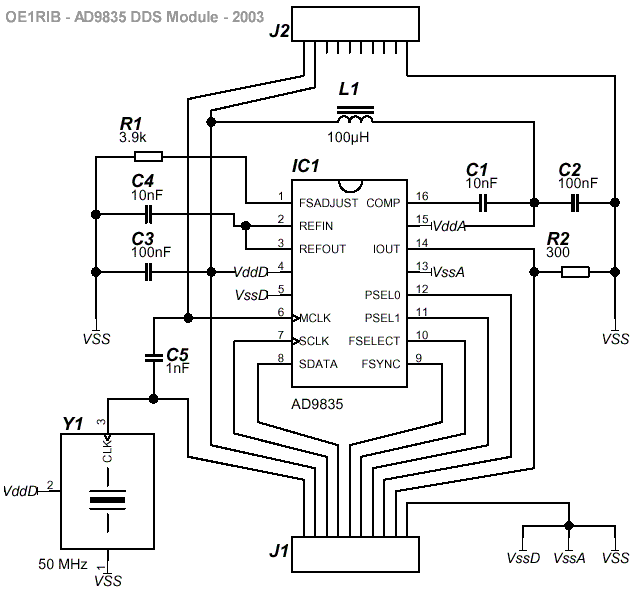
Image 1: AD9835 Module Schematic
The PCB
The PCB is single sided and except the 50 MHz oscillator module and the coil which
are of normal size all other components are SMD size 1206. Special care must be
taken soldering the AD9835. It comes as a TSSOP and unless you don't have a soldering
iron with a very, very fine tip and a magnifying glass you wont get happy builing
this project. Be warned! This chip is hard to solder.
The red marked lines on the PCB are simple jumper wires which must be soldered from
the non copper side of the board. For more details see the pictures.

Image 2: The PCB Module
|
|
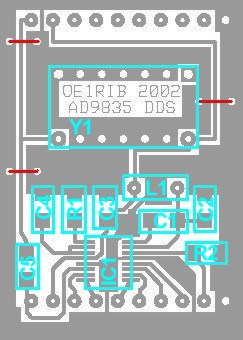
Image 3: Component positions
|
You can download a PDF File with the schematic and the PCB here.
If you
dont have the Adobe Acrobat Reader installed on your machine you can find it here

Pictures of the finished Module
Here you can see how the module looks during different stages of the building process
and how it looks when it's finished. A picture says more than thousand words.
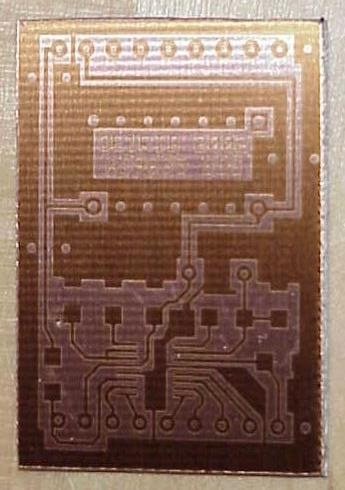
Image 4: The exposed and developed PCB
|
|

Image 5: The finished PCB with all components
|
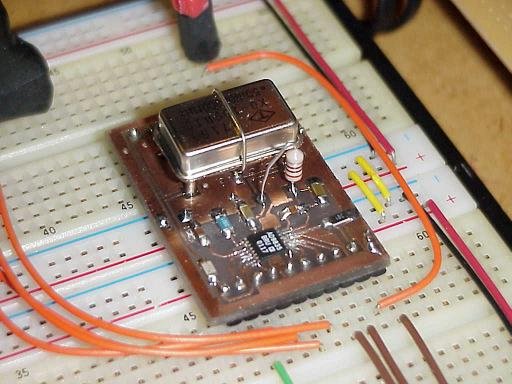
Image 6: Module used on a Breadboard ....
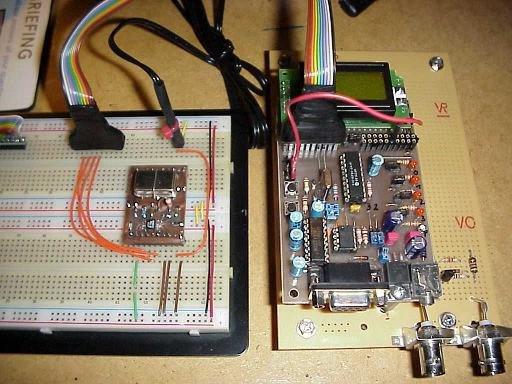
Image 7: ... and with the PIC development system
Notes & Comments
I have tested this module as a VFO and also as a "SoundCard". With this "SoundCard"
you can reproduce nearly every digital mode like RTTY, Packet/APRS and even SSTV.
I have connected the output of the module to a PC's soundcard and run some audio
test software. You can see the output of a 1000 Hz tone on the folowing images.
Usable software to for analysing audio signals are:
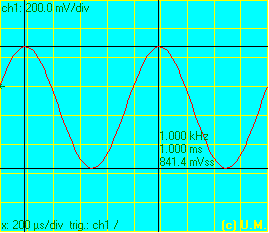
Image 8: 1000 Hz measured testsignal
|
|
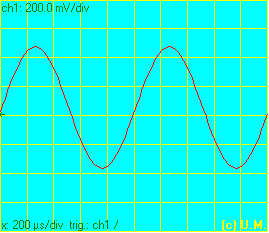
Image 9: 1000 Hz sine wave
|
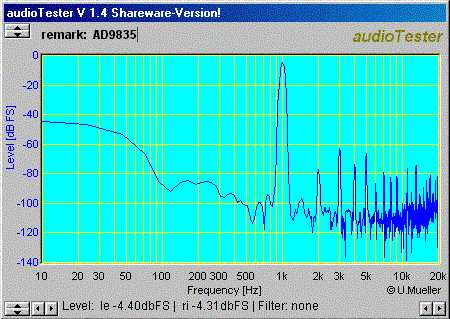
Image 10: Spectrum of the 1000 Hz testsignal
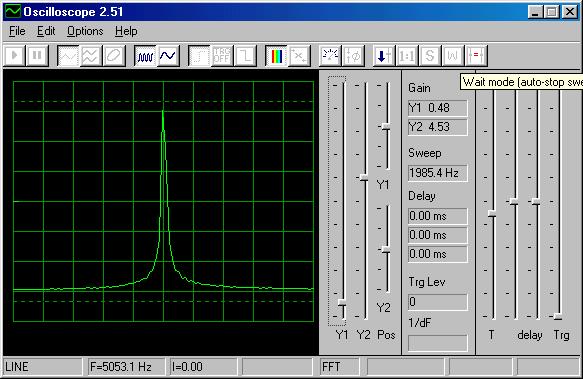
Image 11: Spectrum of the testsignal
Click here to see details about the SSTV testgenerator based on this project.
Credits
This project is based on some Infos found on the Internet eg. Analog Devices and modified by me
OE1RIB, Richard
If you have any comments or sugestions just drop me a line.
73, OE1RIB




![]()







